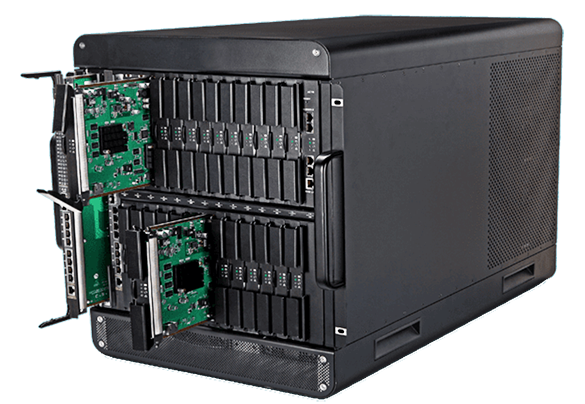
Raw material extraction from oil and gas fields is a complex process which requires an expansive infrastructure system. For oil and gas (O&G) companies to succeed, it is imperative that they are able to monitor — in real-time — thousands of miles of pipelines, extraction sites and plant operations in different geographic locations.
SCADA (Supervisory Control and Data Acquisition) is a type of computer system that is designed to gather and quickly analyze real-time data and is often used to ensure that O&G companies can collect and monitor a high volume of information easily and more efficiently.
The Internet of Things (IoT) is often viewed as a technology that is implemented on top of SCADA. The unique combination of IoT and SCADA is now referred to as Industrial IoT (IIoT), making scalability, data analytics, standardization and interoperability truly possible for a wide range of industries. When put into use, an IIoT system is designed to help with the control and monitoring of an entire plant or equipment that deals specifically with time-sensitive and critical events. By doing so, the system can pinpoint anomalies in a process, by comparing real-time data against the data collected, creating alarms to alert the operator to take action to address an issue and permitting maintenance personnel to make more informed and efficient decisions. For instance, when a leak occurs in a pipeline, the IIoT system that’s in place will help to detect the leak and transfer the information pertaining to the leak back to a central location.
Operational Imperatives
All monitoring and data acquisition aspects of an IIoT system rely entirely on the communication system to enable the flow of data between supervisory controls, data acquisition units and any sensors/controllers that may be linked to the system. Most IIoT systems communicate over a local multi-drop, point to point radio or TCP/IP communication network.
However, different challenges often prevent the use of these conventional communication networks. Faced with the need for 24/7 connectivity to keep their businesses operating, O&G companies need systems and platforms that will keep working, regardless of the different conditions that may hinder communication, such as geographic location and/or natural or man-made disasters (e.g., floods, fires, earthquakes, terrorist activity, and so on).
Satellite communication (SATCOM) solves the business imperative for fast broadband speeds and ubiquitous coverage to transfer large volumes of data around the world. Satellites can reach every location on the planet, are reliable and flexible, work when other networks are out of operation and most importantly, can provide communication services in areas not served by terrestrial networks (which includes the vast majority of the Earth’s surface.) Whether in the middle of an oil field or in a remote corner of the world, data can be conveyed reliably through satellite communication.
In order to facilitate business prosperity and continuity, O&G companies require:
Coverage: regardless of where offices or sites might be located, satellite communication makes it possible to provide high-throughput broadband communication everywhere in a reliable and secure way. Service levels are comparable or better than terrestrial connectivity without the need to install terrestrial infrastructure.
Business Continuity and Leak Support: weather conditions and other national disasters can completely wipe out terrestrial communication services in minutes. These situations demand the use of satellite communication. Using satellite communication guarantees that O&G companies can continue to operate their communications systems and address any production fault in real-time.
Phillips 66 is a diversified U.S. energy manufacturing and logistics company headquartered in Houston, Texas. The company processes, transports, stores and markets fuels and products globally. They operate a SCADA network that is used to monitor Phillips 66’s pipeline and plants, including refineries, control valves and general pipeline assets. Phillips 66 needed to upgrade their SATCOM network, which provides communication services across tens of thousands of pipeline miles and 64 terminal locations, in order to maintain effective and efficient business operations and achieve enhanced monitoring of their assets to meet the latest safety and compliance requirements of the energy industry.

Gilat’s SkyEdge II-c.
However, understanding the benefits of SATCOM to reach remote pipeline and terminal locations, Phillips 66 decided to upgrade their SCADA network to the industry’s leading satellite communication technology, Gilat’s SkyEdge II-c VSAT platform. The platform’s superior technology provides the ultimate in network connectivity, security and availability in order to effectively monitor Phillips 66 assets. The first sites that were upgraded are located on Phillips 66’s new Gray Oak pipeline, which extends from Midland/Odessa to Corpus Christi, Texas. The remainder of their network was subsequently upgraded, as well.
Gilat Satellite Networks’ SkyEdge II-c platform overcomes all the concerns raised by Phillips 66 in operating their SCADA network over satellite:
Performance: Gilat’s solution ensures high performance over the satellite link, supported by its TCP acceleration technique. Gilat’s acceleration technique is embedded in the VSAT and as such provides even better performance. In addition, this integrated embedded acceleration solution is highly efficient due to having only a single box to manage.
Reducing Complexity: oil and gas companies can extend their VPNs over satellite with SkyEdge II-c Layer 2 services with acceleration, thus minimizing complexity. By connecting the customer premises (for example, an MNO, Telco or ISP) and the carrier core (EPC, Corporate or BRAS) with a satellite based transparent IP VPN, energy companies maintain the efficacy of their VPN with the addition of the satellite component. SkyEdge II-c Layer-2 networks are field deployed worldwide with Tier1/ Tier2 Telco networks.
Security: Gilat further provides the best end-to-end security from the oil and gas company’s remote locations and facilities to the servers at Phillip 66’s Corporate Data Center with Layer 2 or 3. SkyEdge II-c delivers embedded encrypted TCP acceleration from the customer device all the way to the Security Gateway at the Data Center. This includes IPsec implemented in the VSAT, securing connectivity from the customer device to the VSAT.
Powering The Energy Industry
Gilat offers an innovative, high-performance VSAT solution catered specifically to the demanding broadband needs of the O&G industry. This flexible and scalable solution is comprised of an advanced VSAT hub platform, as well as a range of terminals, antenna systems and BUCs that deliver reliable broadband communications to distant platforms and fleets. Gilat’s solution supports multiple backup options to avoid failures, QoS-based traffic differentiation per application, seamless interoperability with Ethernet, MPLS and IP backbones, and advanced acceleration and optimization for Internet traffic.

Gilat’s SkyEdge II-c platform is field-proven and successfully deployed in multiple energy companies worldwide. With Gilat’s solution, energy companies achieve true high-speed broadband connectivity for voice, data and video services with better security, operational efficiencies and lower costs. Our set of VSATs support varied needs and as such the VSATs are fine-tuned, addressing capabilities such as support of low power requirements, climate proof needs, end-to end encryption and support of thousands of connections per site.
www.gilat.com
Author: Tzahi (Zack) Zilca is the Account Manager, North America, at Gilat.


